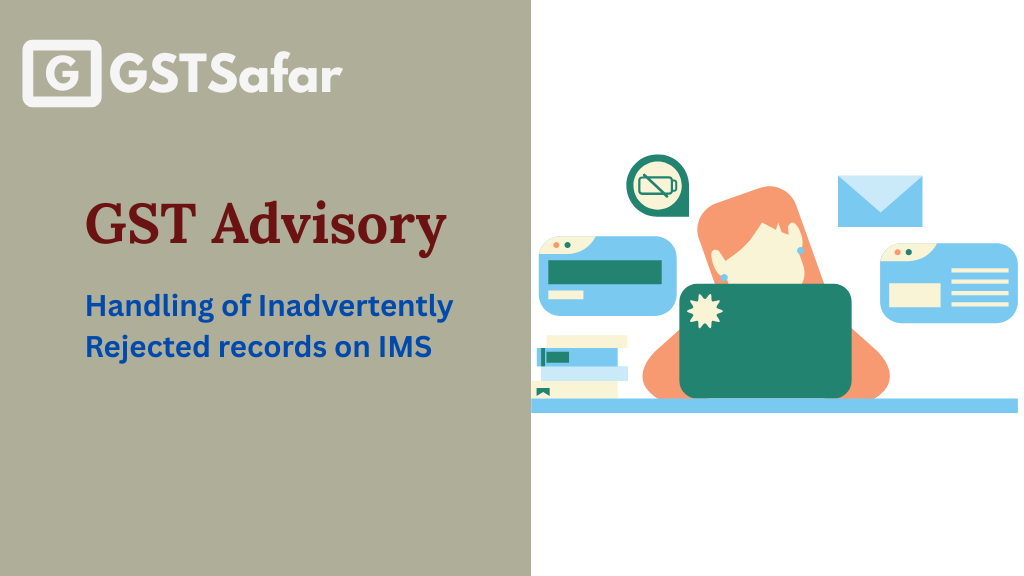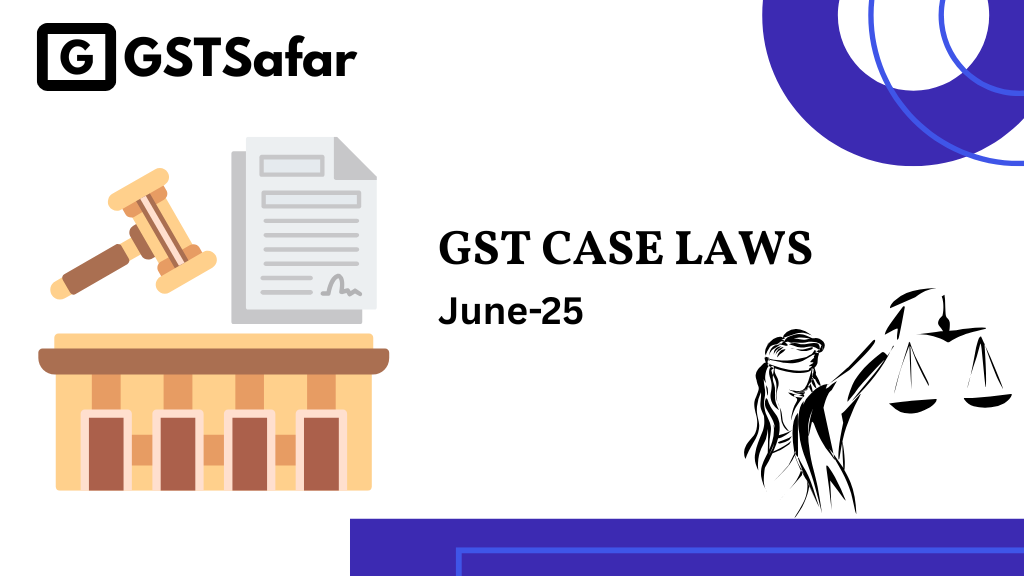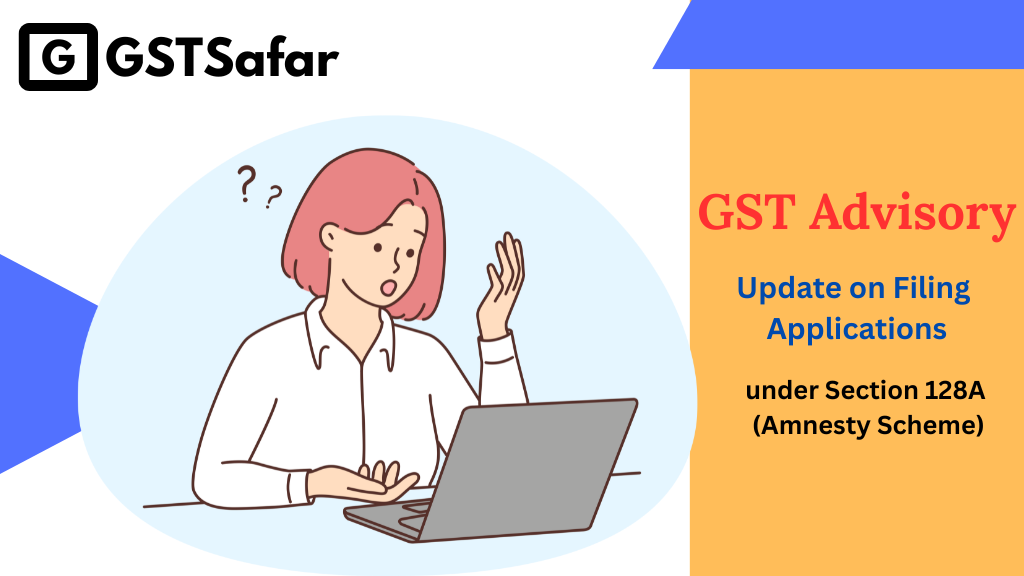Table of Contents
ToggleSmall Introduction
The scope of self-assessment tax has been widened by recent amendment in GST. As per the changes in the GST law effective January 1, GST officers have been allowed to directly initiate recovery action against those errant businesses which showed higher sales in monthly return GSTR-1 but under-report it while tax payment in GSTR-3B.
The doubts are being raised by the trade and the field formations regarding modalities for initiation of the recovery proceedings under section 79 of the Act in the cases covered under the explanation to sub-section (12) of section 75 of the Act. Therefore CBIC has issued guidelines for recovery proceedings under Section-79 to prevent the hardship to genuine business people.
Amendment in Sub Section 12 of Section 75 of CGST Act 2017
- Mismatch between GSTR-1 and GSTR-3B from 01.01.2022 now can result in direct recovery proceedings by GST officer
- In simple words if figures shown in GSTR-1 are higher than figures shown in GSTR-3B, then taxpayer will have to face recovery proceeding by GST officer
- Section 114 of the Finance Act, 2021 has inserted an Explanation to Section 75(12) of CGST Act, 2017 by defining that “self-assesse tax” shall include the tax payable in respect of details of outward supplies furnished under section 37, but not included in the return furnished under section 39”
- This amendment in Section 75(12) of the CGST Act 2017 has now been made effective from 01.01.2022 by Notification 39/2021 Central Tax dated 21.12.2021
- Due to this amendment there is big fear factor in the industry and to help the genuine taxpayers, CBIC has issued the guidelines by Instruction No 01/2022-GST about the recovery proceedings under the provisions of Section 79 of the CGST Act 2017 read with Section 75(12) of CGST Act
Relevant Legal Provisionse
| Section 75 of CGST Act 2017 | General Provisions relating to determination of tax |
| Section 79 of CGST Act 2017 | Recovery of Tax |
| Section 114 of Finance Act 2021 | Explanation inserted in Section 75(12) of CGST Act 2017 |
| Notification 39/2021 Central Tax dated 21.12.2021 | Explanation to Section 75(12) of CGST Act 2017 made effective from 01.01.2022 |
| Instruction No 01/2022 dated 07/01/2022 | CBIC issued guidelines about the recovery proceedings under the provisions of Section 79 of the CGST Act 2017 read with Section 75(12) of CGST Act 2017 |
First Let’s understand what is impact of this amendment
- If figures furnished in GSTR-1 is higher than figure furnished in GSTR-3B, then figure furnished in GSTR-1 shall be taken as self-assessment tax and direct recovery proceeding under Section 79 will be initiated
- Now the recovery proceeding under Section 75(12) of CGST Act can be initiated even without issue of Show cause notice under Section 73 or 74
- That means with effect from 01.01.2022 officers will be having direct power to exercise recovery proceedings under Section 79 of CGST Act 2017 if GSTR-1 figure is higher than figures shown in GSTR-3B
- Section 79 of CGST Act 2017 has given very wide power of recovery from person. It includes even detraining of movable or immovable property of person.
- Suppose in GSTR-1 taxable supply is Rs 1, 00,000 and in GSTR-3B taxable supply is Rs 60,000, then self-assessed tax will be on Rs 1,00,000. Means figures mentioned in GSTR-1 will be taken as base and officer can directly start recovery proceedings under Section 79
What if figure shown in GSTR-3B is higher than GSTR-1?
- If figures shown in GSTR-3B is higher than GSTR-1, then figures shown in GSTR-3B shall be taken as self-assessment tax
- Section 75(12) of CGST says that figures mentioned in Section 39 (means GSTR-3B) is self-assessment tax and will be recovered if unpaid
- Now explanation which has been inserted to Section 75(12) of CGST Act 2017 is applicable only when figures reported in GSTR-1 but not in GSTR-3B
- So based on main provision and explanation of Section 75(12), self-assessment tax mean figures reported in GSTR-1 or GSTR-3B whichever is higher
Self-assessment tax will be on which amount? Let’s understand by few examples
Exampl-1: Taxable Supply in GSTR-1 Rs 1,00,000, Taxable Supply in GSTR-3B NIL. Self-assessment tax will be on Rs 1,00,000. Figure reported in GSTR-1 will be taken as base for self-assessment tax as it’s higher than reported in GSTR-3B
Exampl-2: Taxable Supply in GSTR-1 Rs 1,50,000, Taxable Supply in GSTR-3B Rs 90,000, Self-assessment tax will be on Rs 1,50,000. Figure reported in GSTR-1 will be taken as base for self-assessment tax as it’s higher than reported in GSTR-3B
Exampl-3: Taxable Supply in GSTR-1 Rs 2,00,000, Taxable Supply in GSTR-3B Rs 2,00,0000, Self-assessment tax will be on Rs 2,00,000, Figure reported in GSTR-1 and GSTR-3B both is equal.
Exampl-4: Taxable Supply in GSTR-1 Rs 1,50,000, Taxable Supply in GSTR-3B Rs 1,80,000 Self-assessment tax will be on Rs 1,80,000,Figure reported in GSTR-3B will be taken as base for self-assessment tax as it’s higher than reported in GSTR-1
Example-5: Taxable Supply in GSTR-1 Rs NIL, Taxable Supply in GSTR-3B Rs 70,000, Self-assessment tax will be on Rs 70,000, Figure reported in GSTR-3B will be taken as base for self-assessment tax as it’s higher than reported in GSTR-1
Genuine reasons for excess reporting in GSTR-1 over GSTR-3B.
- Clerical error
Example: There is clerical error while reporting in GSTR-1 e.g Taxable supply is written Rs 1,00,00,000 instead of Rs 10,00,000 and in GSTR-3B it is correctly reported Rs 10,00,000 then we can say that Rs 70 lakhs excess reported in GSTR-1. So recovery proceedings could be initiated by proper officer under Section 79 on taxable supply of Rs 70,0000/- even though there is no such supply at all.
- Supply could not be declared in GSTR-1 in earlier tax period
Example
| Period | Taxable Supply | Taxable Supply | |
| GSTR-1 | GSTR-3B | Reason | |
| December-2021 | 4,50,000 | 5,00,000 | One invoice of Rs 50,000 was missed to report in GSTR-1 |
| January-2022 | 6,50,000 | 6,00,000 | Invoice which was missed to Report in Dec-21 now reported in GSTR-1 |
| Total | 11,00,000 | 11,00,000 |
In above example one can see that total reported revenue cumulatively is Rs 11,00,000/-. Means taxpayer has paid taxes on Rs 11,00,000/-, but still it could result in recovery proceeding by proper officer under Section 79 for Janary-2022 for Rs 50,000 taxable supply
Details of guidelines issued by CBIC for recovery proceedings
In order to resolve such hardship as above mentioned, the CBIC (Central Board of Indirect Taxes and Customs) has come up with guidelines by instruction no dated 01/2022-GST dated 07/01/2022 regarding recovery of proceedings under Section 79 of the CGST Act, 2017 in cases covered under explanation to sub section (12) of section 75 of the CGST Act, 2017
Following instruction given by CBIC in this regard
- Opportunity needs to be provided to the concerned person to explain the differences between GSTR-1 and GSTR-3B, before any action under section 79 of the Act is taken for recovery.
- Accordingly, where ever any such amount of tax, self-assessed by the registered person in his outward supply statement GSTR-1 is found to be short paid or not paid by the said person through his GSTR-3B return in terms of the provisions of sub-section (12) of section 75 of the Act, the proper officer may send a communication (with DIN, in terms of guidelines issued vide Circular No. 122/41/2019-GST dated 5th November 2019) to the registered person to pay the amount short paid or not paid, or to explain the reasons for such short payment or non-payment of self-assessed tax, within a reasonable time, as prescribed in the communication.
- If, the concerned person is able to justify the differences between GSTR-1 and GSTR-3B, or is able to explain the reasons of such short-payment or non-payment of tax, to the satisfaction of the proper officer, or pays the amount such short paid or not paid, then there may not be any requirement to initiate proceedings for recovery under section 79.
- However, if the said registered person either fails to reply to the proper officer, or fails to make the payment of such amount short paid or not paid, within the time prescribed in the communication or such further period as may be permitted by the proper officer, then the proceedings for recovery of the said amount as per provisions of section 79 may be initiated by the proper officer. Further, where the said registered person fails to explain the reasons for such difference/ short payment of tax to the satisfaction of the proper officer, then the proper officer may proceed for recovery of the said amount as per provisions of section 79
FAQ
Q: What are the methods of recoveries under GST law?
Ans:
- Proper officer can deduct the amount payable to person which is under the control of proper officer. For example deducting the amount from refund due to person
- Proper officer can sell goods belonging to person which is under control of proper officer.
- Proper officer can send notice to person to pay dues immediately
- Proper officer can restrain and detain any movable or immovable property under of person
- Proper officer shall prepare certificate of amount payable by person and will be given to collector of the district in which such person owns property, now collector shall proceed to recover from such person the amount if it were an arrear of land revenue;
- The proper officer may file an application to the appropriate Magistrate and such Magistrate shall proceed
- to recover from such person the amount specified thereunder as if it were a fine imposed by him.
Q: What is demand and recovery in terms of GST?
Ans: In simple language, where there is short payment of GST or wrong/excess utilization of Input Tax Credit under GST, then demand and recovery proceedings is initiated under various sections of CGST Act 2017. Sections 73 to Section 84 of CGST Act 2017 are for demands and recovery
Q: What if there is difference between GSTR-1 and GSTR-3B?
Ans: From January-2022 if there is difference between GSTR-1 and GSTR-3B, then the amount reported in GSTR-1 or GSTR-3B whichever is higher shall be taken as base for self-assessment and recovery proceeding under Section 79 of CGST Act shall be initiated against the taxpayer. However, opportunity shall be given to explain the reason between those two.
Conclusion
Though, this amendment was made as deterrent to those who file GSTR-1 and pass on the GST credit to buyer but do not pay taxes correctly by filing GSTR-3B but, the said amendment gives wide power of the recovery proceedings, in respect of ‘self-assessed tax’ on outward supplies which have been declared in Form GSTR-1 but not included in GSTR-3B, which raises concern in the mind of trade members whether such recovery is justified even for a clerical error straightaway under Section 79 of the CGST. Guidelines issued by CBIC will definitely be useful to taxpayer but it will not prevent officers to issue the number of notices to taxpayer seeking clarification. Clarification to officers by taxpayer for figures reported in GSTR-1 and GSTR-3B may require huge reconciliation work for many different tax periods. This kind of routine notices by proper officers of GST will consume the lots of productive time of businessmen. Such kind of provisions of GST is making business difficult day by day and the ease of doing business objective is being forgotten. In this regard, it is advisable for the Government to provide some defined time period, say 6 months, for amending the GSTR-1 for correction of any unintentional mistakes so as to provide ease of doing business
Gain you GST knowledge by reading more articles
Latest GST updates in July-2022
Key Decisions of 47th GST Council Meeting
GST e-invoice applicable to entities having turnover more than Rs 20 cr (from 01.04.202)









